How To Set Up A Beer Tap
Beer is nifty. That's something we can all agree on (the fact that you lot're reading this is probably proof of that). While cracking open up a can or bottle of ice cold beer is always a refreshing experience, there is nothing better than a freshly poured pint of your favorite beer on typhoon. Draft beer is beer that is served on tap from a keg as opposed to beer that is poured from a bottle or can. Typically, draft beer poured from kegs is fresher than bottled or canned beer because there is a shorter turnaround from brewery to distributor to bar, and even shorter if you are drinking information technology directly at the brewery. There is no deviation between draft beer and draught beer. While spelled differently both are pronounced the aforementioned way, and both refer to beer served from a keg. The term "draft beer" is more than commonly used in North American while "draught beer" is used in the U.K., Europe and Australia. You will occasionally see American brands utilise "draught beer" when referring to beers imported from Europe. Some American bars or restaurants may also employ the European spelling to create an authentic feel for their establishment (i.east. Irish Pubs, German Beer Hall, etc.). There are a number of different ways to get typhoon beer from a keg to your glass. A typical dispense system pumps carbon dioxide gas (or a CO2/nitrogen gas alloy, commonly referred to as beer gas) into the keg which forces the beer out of the keg through beer lines to a faucet where it is poured into a beer-make clean glass. Buying a kegerator or converting a fridge into a kegerator is an ideal way to have draft beer at dwelling house. A kegerator is a self-contained refrigerated beverage dispenser equipped with beer and air lines, an air tank, regulator, draft beer tower and faucet. Where you want to install your kegerator will dictate which style you'll desire to buy. A freestanding kegerator can be fix just about anywhere with ability, and certain models have casters on them then the kegerator can be moved freely with relative ease. Under counter kegerators can be built into a bar area or nether a kitchen counter. They are designed to properly vent warm exhaust air created by the motor out the front end of the unit. For those that are looking for a permanent solution for dispensing draft beer outdoors, you tin can purchase a kegerator designed to withstand the elements. Outdoor kegerators are built with a stainless steel exterior to foreclose rusting and a sealed back to protect the electrical components from exterior wet. Your keg connects to the kegerator via a coupler (#11). An air line (#7) attached to the coupler pushes gas from the air tank (#8) into the keg, which draws beer from information technology. The beer travels out of the keg through the coupler into beer lines (#x), which travels upward into a draft tower (#3) and connects to the faucet (#2) where the beer is dispensed. Residential kegerators are typically designed to hold 1 half keg or 2 to three corny or sixtel kegs at a time depending on the size of the refrigeration unit. Commercial kegerators vary widely in size and capacity, but typically concord 1-v half kegs and upward to 12 corny or sixtels. You can accept any fridge big plenty to hold a keg of beer and plough it into a kegerator with a kegerator conversion kit. All y'all need to do is drill a hole through the fridge and install the necessary components. A kegerator conversion kit comes with all the parts you lot'll need to catechumen your fridge into a proper beer dispensing device. Most conversion kits volition include a draft faucet, shank, tap handle, beer and air line, keg coupler, washers, CO2 tank and CO2 regulator. A single tap conversion kit is the most popular unit of measurement. This setup allows you to draw beer from a unmarried keg and pour from a faucet mounted on the outside of your fridge. Double tap conversion kits are keen for those looking to serve two beers at once. Like in concept to a kegerator, a keezer is a pinnacle opening chest freezer that has been converted into a beer dispenser. The biggest reward to having a keezer is its size. Since it's larger than a standard fridge or kegerator it tin can hold more kegs, which, of course, means more beers on tap. The ability to accept multiple brews on tap makes keezers an especially popular dispensing solution for homebrewers. You can manipulate beer from your keezer by either installing a draft belfry on top of the hat or installing a wooden collar between the freezer and the hat to mount draft faucets. The wooden collar is a more common method because y'all can install a row of multiple faucets without having to drill holes in the freezer lid. A chapeau-mounted typhoon belfry could be damaged when you lot demand to open up the chapeau to alter kegs. A keezer also requires an external temperature control to keep beer from freezing. This allows you to exist more precise when setting the temperature than with a temperature control punch inside a refrigerator. A jockey box is an ideal temporary and mobile solution for dispensing draft beer. Jockey boxes are built using a standard, insulated ice cooler. It relies solely on an ice bath for refrigeration, so it doesn't require any electrical power to operate. Just like a kegerator information technology uses CO2 to pump the beer from the keg into 1 end of the cooler and through the jockey box coils to a draft faucet at the other finish of the libation. The coils are kept in an water ice bathroom inside the cooler to help chill the beer every bit it travels from keg to faucet. Your keg must also be kept chilled using ice when dispensing with a jockey box. Offered in pre-built or conversion kits, they tin exist prepare from scratch or built into an quondam cooler. A keg tap or keg pump is the most bones short term method for dispensing draft beer. A typical keg pump uses air or oxygen, which is manus pumped into the keg to describe beer to the faucet. Paw pumps are only recommended for single day events because oxygen doesn't preserve the beer similar CO2 and will cause the beer to go flat and spoil inside 12-24 hours. When dispensing with a keg pump, the keg must be covered in ice to properly chill the beer; warm beer will cause information technology to pour foamy. CO2 keg taps that utilise cartridges or a pressurized tank and regulator are also available. These do non crave hand pumping, and allow your beer to final longer if it is properly chilled. When it comes to choosing new or replacement components for your draft beer arrangement, we recommend using all stainless steel equipment whenever possible. Y'all may take to pay a premium price for stainless components, merely they will final for the lifetime of your draft system when cleaned and maintained properly. Chrome-plated brass components can break downwardly over time due to corrosion, and when they do they can impact the season and quality of your beer. Stainless steel components help to promote better sanitary conditions for your arrangement and provide a consistent and proper-tasting production. Stainless steel connections are also a must if y'all program on serving vino, kombucha, cocktails or java with your draft arrangement. The acids in these beverages will break down chrome-plated contumely even faster than draft beer, and will apace impart off-flavors. Your draft tower, shanks and faucets should have all stainless contacts when serving these beverages. While almost draft beers varieties can be poured with the aforementioned equipment, in that location is one mode of beer that requires a special configuration for your draft system. Nitrogenated beer or nitro beers are dispensed using a nitrogen/CO2 blend called beer gas unlike a traditional draft beer system that uses only CO2. Guinness is the all-time known nitro beer in the world, simply many craft brewers have brewed their ain nitro stouts or IPAs. It's that mixed nitrogen gas that gives Guinness its tell-tale creamy mouthfeel and tight head. This mixed gas alloy comes in a nitrogen gas tank that contains 75% nitrogen and 25% CO2. In order to get Guinness on draft at home yous need the special blend of nitrogen gas, a nitrogen gas tank and a stout faucet and a U-system keg coupler to connect the keg to your draft system. Commercial establishments, such every bit bars, restaurants and breweries, need to serve multiple beers on tap. They as well need a place to store and chill their kegs in an area that is easily attainable and then that kegs can be changed quickly. The all-time method for your establishment to dispense draft beer depends on where you need to shop your kegs in relation to where your bar surface area is. Straight-draw draft beer system is the technical name for specialized equipment built specifically for dispensing keg beer from a temperature-controlled environment through the use of compressed gas. Information technology is the most basic method for commercial dispensing of typhoon beer. Straight draw draft beer systems may be housed in a kegerator, walk-in cooler or converted refrigerator. This tin can be accomplished with a kegerator installed under the bar or counter. Commercial kegerators accept ample room to hold multiple ½ butt kegs (full size kegs) besides every bit extra room for additional cold storage of items. They are made from sturdy, commercial grade materials that can agree upwards to the wear and tear of constant use. If your kegs are stored in a walk-in cooler that shares a wall with your bar area, then kegs can be stored shut to the dispensing point and beer line can exist run through the wall to an adjacent typhoon faucet. When your kegs are stored in a libation that is not in shut proximity to your bar area so you are in demand of a long-draw draft system. Long-draw draft systems deliver draft beer from your libation to the draft tower through a run of insulated beer lines. These beer lines are kept chilled as they travel from the kegs to the draft belfry to prevent the beer from pouring foamy and preclude the formation of leaner in the lines. At that place are 2 methods for cooling beer in a long-draw typhoon system: air cooled and glycol. An air cooled draft arrangement uses a forced air blower to send cold air from the cooler through a conduit containing your draft lines to the typhoon tower. The cooled air also keeps the draft tower chilled to keep your beer at a consistent temperature.This setup just works with draft systems with runs of 25 feet or less. Glycol cooled typhoon beer arrangement uses a glycol power pack to pump a mixture of water and glycol coolant through cooling lines bundled alongside beer lines in an insulated bundle known equally trunk line. The coolant line also run across the faucet shanks inside the typhoon belfry to absurd the beer. A keg is a cylindrical vessel used to transport and dispense mass quantities of beer while maintaining its quality and integrity. It protects the beer from exposure to oxygen and light, while allowing it to be dispensed easily and rapidly. Kegs are traditionally made from stainless steel and sometimes aluminum or other materials. A single hole centered at the top of the keg and a 2-mode valve allows liquids to be added and removed from the keg. After any sort of transport or travel, give your keg some time to settle downward. If yous don't, y'all're likely to experience excessive foaming at tapping fourth dimension. Remember that the beer within of a keg is carbonated, and then moving or shaking information technology volition cause it to foam – just like a can of beer or soda. We recommend that yous allow your keg sit down for at least an hour later transport earlier pouring. Keg beer is unpasteurized, so it has to stay cold to stay fresh. As a general rule, call up of keg beer every bit y'all think of milk: it needs to be refrigerated at all times. Keep your kegs between 34 – 40 degrees Fahrenheit and your beer will remain fresh and delicious. The beer inside a keg will retain its total season about 30 – 45 days after borer. It's difficult to pinpoint an exact corporeality of time, as a keg's "shelf-life" is dependent on storage conditions and the make/style of the beer. Generally, hoppy beers and those with a college alcohol content will final longer because the hops and booze act equally preservatives, inhibiting the growth of bacteria. When beer does go bad quickly, it's virtually always one (or both) of ii culprits: oxygen and/or bacteria. Unfortunately, bacteria will eventually spoil unpasteurized keg beer – even when the keg is kept in the perfect storage conditions. Modern scientists have discovered that the only way to crush the bacteria is to drink all of the beer in your keg, before the leaner has a hazard to ruin information technology – unremarkably in that xxx – 45 day range. Should you crave critical consumption assistance, KegWorks inquiry has establish that good friends are ordinarily willing to help. The other culprit, oxygen, is particularly harmful to kegs tapped with a hand pump. A hand pump forces air (containing oxygen) into the keg, which in plough, forces the beer out. However, as presently as the oxygen is introduced in the keg, it causes a chemic reaction called oxidation. Oxidation will cause the beer inside of a keg to go apartment and larn a sort of sour gustation. Thus, a keg tapped with a hand pump should be consumed within 24 hours. Thankfully, neither of these processes render beer harmful to humans, but they exercise arrive undrinkable. Pressure is an imperative component of all fully-functional draft beer systems. It'due south what keeps your beer carbonated and tasting fresh all the mode from keg to glass. Having too much or too petty pressure will affect the way your beer is dispensed, and you lot won't be able to enjoy its full potential. These keg pressure pointers will aid you find that perfect medium. As CO2 enters a keg, it displaces your beer at a constant pressure level. When you open the tap/faucet, beer flows out of the keg and into your glass due to a push from the CO2. The gas then fills the infinite where the beer was formerly housed, and that's the "head space." The CO2 fills the caput space and maintains the pressure inside of the keg at the PSI assault your CO2 regulator. This constant PSI keeps the beer carbonated by preventing CO2 leakage. Your CO2 tank must exist stored upright or information technology won't work properly. Storing the tank improperly can also cause extensive impairment to your regulator. CO2 tank in the proper upright position. Almost ales and lagers produced in the US should be dispensed at x – 12 PSI. Stout and other nitrogen-reliant keg beers are usually dispensed at 25 – xxx PSI. For the specific dispensing force per unit area for a particular keg, check with your local distributor. Too much pressure will leave you with foamy beer that comes apace out of the faucet. If your beer is over-carbonated, the foam will appear tight with large bubbles. If you encounter this problem, it's like shooting fish in a barrel to fix. Adapt your regulator pressure to the proper lower level and depict a few foamy pitchers. You can also apply your coupler's relief valve to drain out the extra force per unit area. These measures will force your system to balance itself out again. If the pressure is left likewise loftier for as well long, CO2 will be forced into the beer resulting in permanently over-carbonated and excessively foamy beer. Thus, it's of import that you address this problem as soon equally the outcome is identified. Accommodate the regulator to the proper PSI. Too little pressure will too strength foam considering the CO2 can break free from the beer as it enters your glass. If the force per unit area is not raised to the appropriate level, your beer will eventually get flat. When y'all see foam or bubbling visibly ascent in your beer hose, this is a tell-tale sign of low pressure. If your beer is under-carbonated, the cream will look loose, often described as actualization "soapy" with pocket-sized bubbles. To correct this trouble, you should first make certain that your CO2 tank is properly turned on with gas remaining inside. Then, cheque to see the level at which your beer regulator is set. If your tank is functioning properly, y'all'll know that your regulator is set up to the correct number and there are no obstructions in the air line. If this is the case, you may need to supplant your regulator or approximate. Regulators do wearable down with time and employ, so you should more often than not replace them every 4-6 years. There is a science to brewing beer, only did yous know there are also well established standards when it comes to pouring and serving beer? You just can't catch whatsoever glass you have sitting around, pull that tap handle forward and let the beer cascade into the lesser of the glass. You'll likely wind upward with more cream than beer in your glass. Pace ane: Hold your drinking glass at a 45-caste angle. Keep the course a bit below the faucet, and make sure information technology doesn't touch the faucet. Step 2: Open up the faucet quickly and swiftly, and brainstorm pouring beer downward the side of the glass until information technology is most half total. Step 3: Continue to fill up the glass as yous tilt it upright to a ninety caste angle, allowing a generous head of cream to form at the peak of the glass. Learn more about the proper method for how to cascade draft beer. To go along with those various styles of beer, there are specific styles of beer glassware to accentuate certain characteristics or flavors in beer. Whether its drawing certain aromas from information technology or assuasive for a thicker head of foam to dispel more than carbonation, specialty glassware can greatly enhance the drinker'south experience. Beer Clean Glassware is an industry term describing a glass that is gratuitous of whatsoever impurities that would give CO2 a place to cling to, ensuring the beer's best look and taste. A certain sign of a drinking glass that is not beer clean is the formation of tiny bubbling on the sides of the within of the drinking glass. When CO2 stays in the glass it may lessen the corporeality of foamy head, wreak havoc on the mouthfeel and flavors, and generally get out you with a subpar drinking experience. On summit of visible residual, like fingerprints or lipstick, there are also things you tin't see that cause these impurities. Fat or grease-based residues like milk or dish lather tin all get out a articulate picture on glass. This film causes the speedy release of carbonation, causing your beer to go flat, and changing the taste. Odors captivated from stale air, fume, or drying towels, may also requite beer an off-taste. It is important to properly clean and sanitize your glassware to reach beer clean glassware. Spectacles should be done in hot h2o with a detergent that is non fat or oil-based, scrubbed clean with a brush and sanitized. Many breweries, craft beer bars and beer stores sell draft beer that you can accept domicile in a sealed container known every bit a growler. Growlers are air-tight jugs, usually fabricated of drinking glass, ceramic or stainless steel, used to transport draft beer and other beverages served on tap in bulk. Nigh growlers hold 64 ounces, which is equal to four pints. Y'all can likewise observe 32 ounce growlers, which are sometimes referred to as a howler. Growlers are filled using a special filler tube that pours beer directly to the lesser of the container to reduce the amount of foam created. When the growler is filled it is sealed with a cap that locks in the beer's freshness for about a calendar week. Draft beer volition remain fresh for about 4 to half-dozen hours in one case the growler is opened and its contents are exposed to oxygen. A crowler is the aluminum cousin of the growler. Information technology is a 32 ounce aluminum can that y'all tin fill with typhoon beer. A special machine seals the crowler with a chapeau, which locks in the beer's freshness by protecting it from being exposed to oxygen and UV light. Beer tends to stay fresh for virtually three-7 days when sealed within. The lid features a pop superlative, just similar a regular aluminum can, that you use to open the crowler. It is a dandy option for bringing draft beer to places where glass containers are frowned upon (beaches, parks, etc.), or if yous are clumsy and tend to drop and break glass growlers. The explosion of craft beer in North America over the past 20-25 years has introduced people to a diversity of new styles and types of beer, and the best manner to experience those styles of beer is on draft. In that location is a fashion of beer for every kind of flavour from hoppy and bitter to something more roasted and malted. Check out our serial of guides on some of the popular styles of beer. In one case you've installed and ready your draft beer system, you can't only set it and forget it. It needs to be properly cleaned and maintained, preferably every ii weeks or any fourth dimension you change the keg. Bacteria, mold and yeast can form on any component draft beer touches, especially your beer lines, draft faucets, and keg couplers. This bacteria can create improper flavors and aromas in your beer or cause your beer to cascade foamy. Beer lines, faucets, couplers and other components should exist cleaned on a regular footing with cleaning solution or detergents created specifically for cleaning typhoon systems. If your draft beer is pouring foamy, and cleaning your draft lines has not helped, in that location are other issues that tin can impact your cascade. Luckily it is easy to troubleshoot most issues with your draft beer arrangement. Most issues are caused past either improper temperature, improper pressure level or the cleanliness of your draft lines and glassware.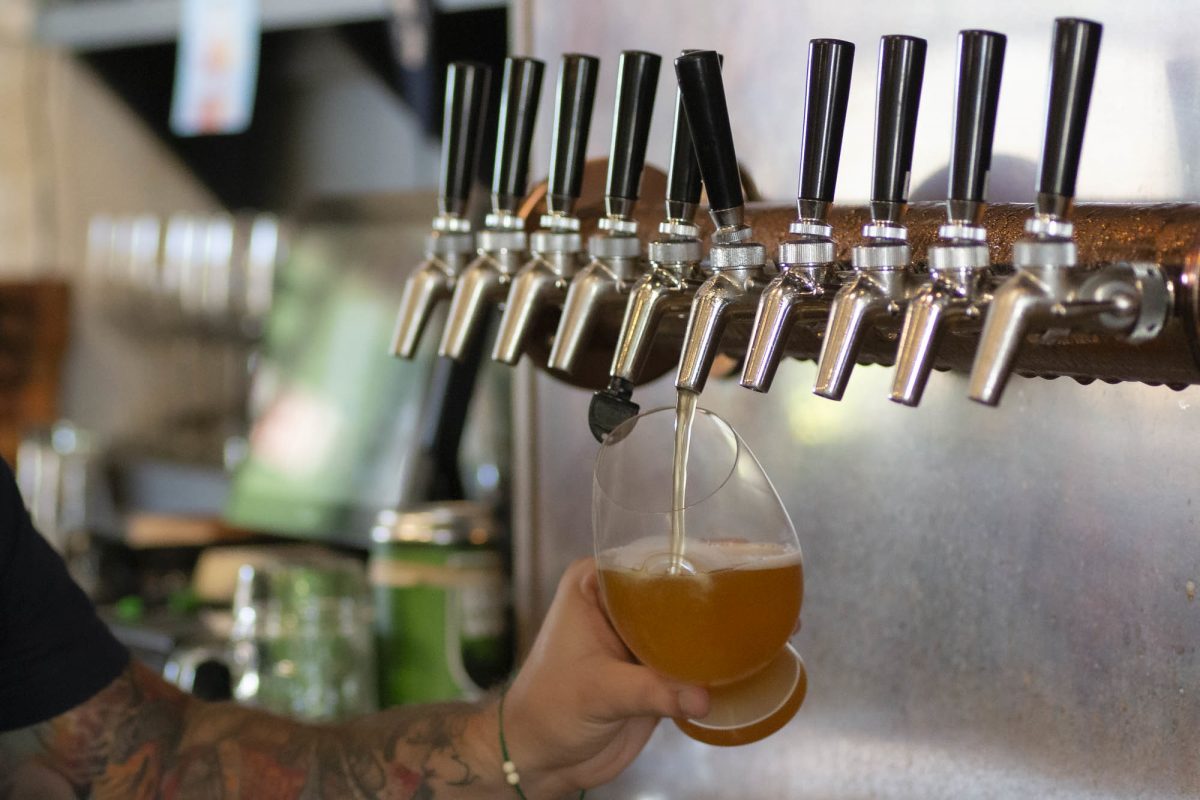
What is Draft Beer?
Draft vs Draught Beer
Dispensing Draft Beer
Kegerators

How does a kegerator work?
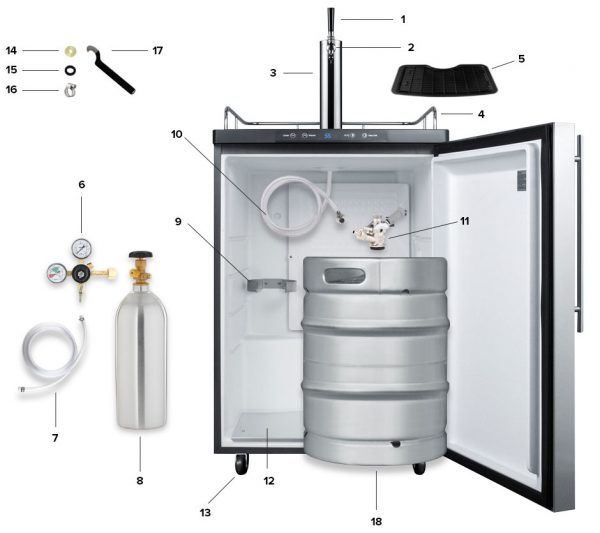
Kegerator Parts
How many kegs fit in a kegerator?
Kegerator Conversion Kits
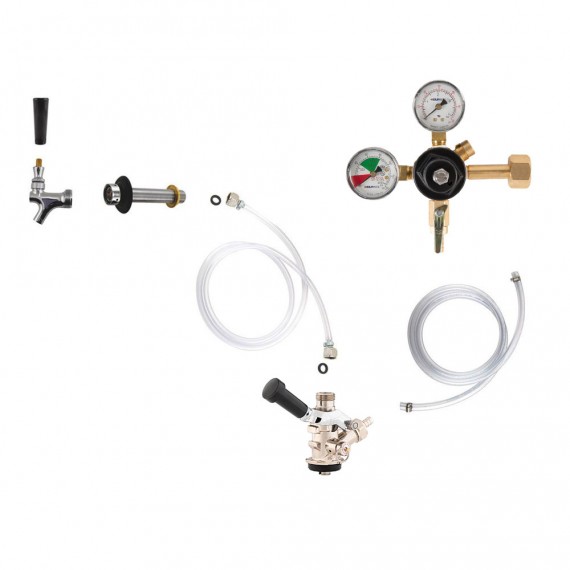
Keezers
Jockey Boxes
Keg Taps and Pumps
Stainless Steel Components
Guinness and Nitro Beers
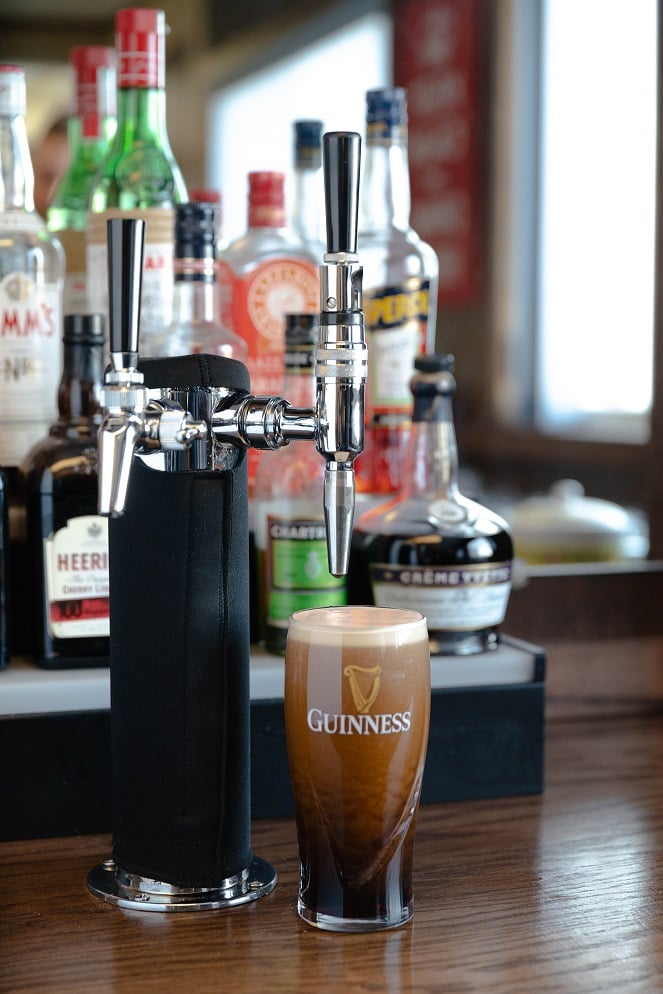
Commercial Draft Beer Systems
Direct-Draw Draft Systems
Long-Draw Draft Systems
Keg Basics
What is a keg?
Keg Tips, Tricks and Rules to Call back
Let Your Keg Sit Afterwards Transport
Keep Your Keg Common cold
Proceed Your Keg Beer Fresh
Keep Your Keg Clean
How long does a keg last?
The Nuts of Keg Pressure level
Almost Caput Space
Continue information technology Straight
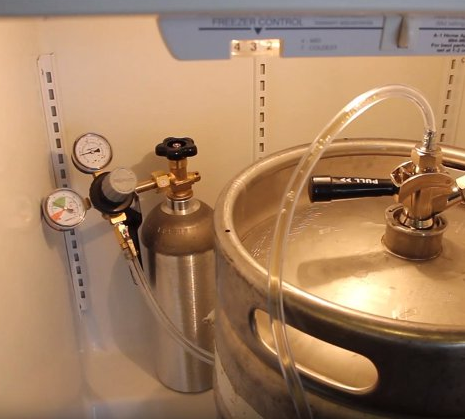
Find the Magic Number
Too Much Pressure level
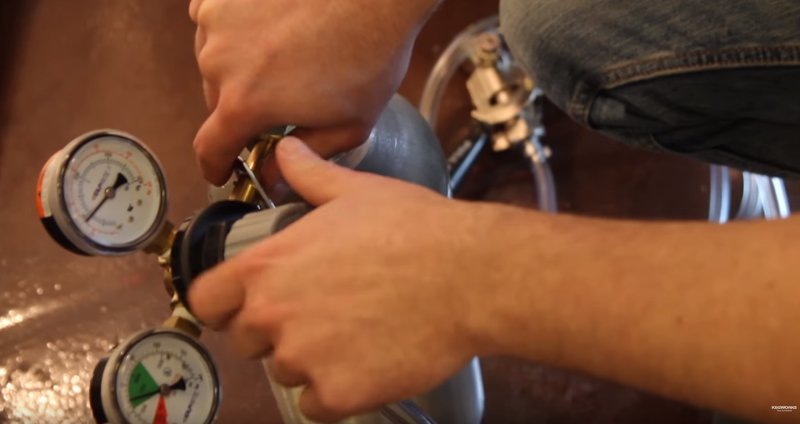
Too Trivial Pressure level
Beer Styles, CO2 Volumes & Keg Pressure Ranges
Beer Manner CO2 Volumes Ideal CO2 Gauge Pressure Stouts 1.2 - two.1 CO2 Vol 35 - 38 psi (beer gas) Ales two.1 - ii.6 CO2 Vol 7 - thirteen psi (beer gas) Lagers 2.iv - ii.6 CO2 Vol ten - 14 psi (beer gas) Continental & Light Pilsners ii.5 - two.eight CO2 Vol eleven - 16 psi (beer gas) Wheat Beers, Belgian Ales, & American Sours 2.eight+ CO2 Vol xv - 20 psi (beer gas)
Pouring and Serving Beer
How To Pour Draft Beer
Beer Glassware
Beer Clean Glassware
Growlers & Crowlers
What is a Crowler?
Types of Beer
Cleaning and Maintaining a Draft Beer Organisation
Draft Beer Arrangement Troubleshooting
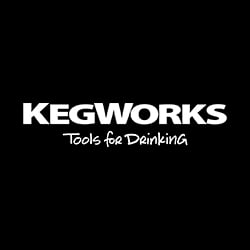
KegWorks
KegWorks has been selling cool tools for drinking and serving knowledge on tap since 1998. We are all about enjoying good drinks with skillful friends.
How To Set Up A Beer Tap,
Source: https://content.kegworks.com/blog/draft-beer-101
Posted by: hessewereaujubmis.blogspot.com


0 Response to "How To Set Up A Beer Tap"
Post a Comment